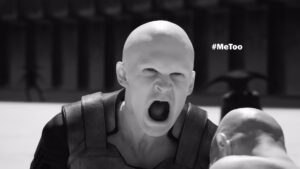Joker’s Hidden Countdown is a Suit of 13 Cards (Then the Joker)

Fans of 2019’s Joker, which I am one of, are likely excited to see what Joker: Folie à Deux is all about. With a month to go to the release date, I wanted to make a post about a discovery I made about Joker over a year ago, but never posted about. This “discovery” is that the “hidden countdown” that was discussed in the film beginning after its release is that the hidden countdown is not a countdown in numbers, it is a countdown of a suit of 13 cards. This really isn’t surprising since Joker is a playing card, after all, and the Joker comes at the conclusion of the card countdown.
To refresh people’s memories about Joker, some numbers appear prominently in scenes in the movie and they appear to make a countdown, at least from parts of 9 to 1. Some of those numbers are not very prominent, however, including the numbers 8, 5 and 10 (if going from 10 to 1) making it a simple theory rather than obvious fact.
For this post, I’ll start with the number 9, as this is the one that clued believers of the countdown theory into the fact there may be a countdown. It’s when Arthur shoots the third and final member of the three wall street guys on 9th avenue. The number 9 is all over the place in this scene.
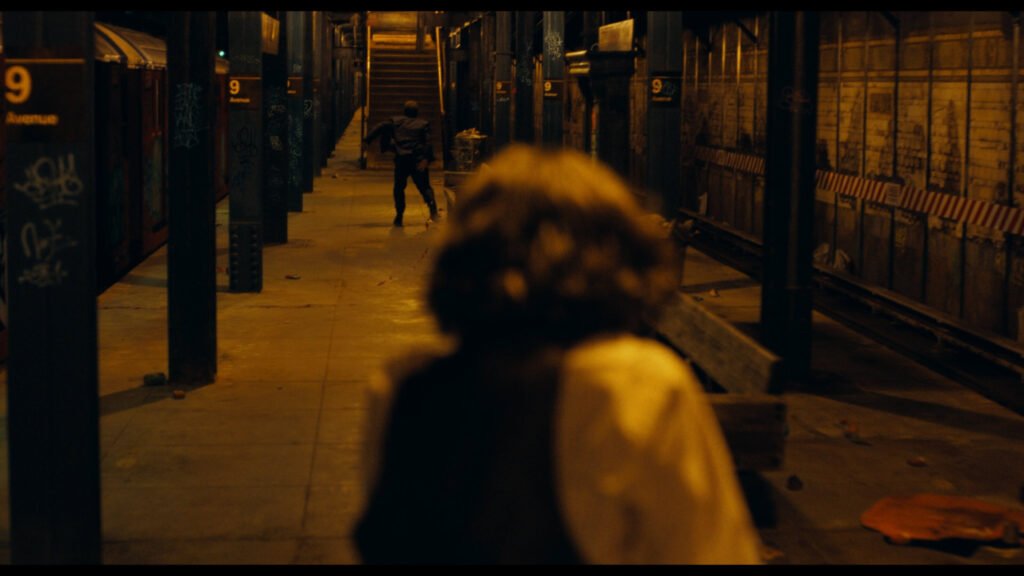

Next is number 8, an iffy one. Believers of the theory cite apartment 8B and the large B below it when Arthur goes to visit Sophie, his imaginary girlfriend, in his head. The theory goes that the large “B” is the prominent number 8 since it resembles an 8 and Arthur’s apartment has already been seen as 8J, the J presumably standing for Joker.

Next is number 7, a prominent one. It’s at Arkham when Arthur travels there to obtain his mother’s records. It’s showed both at the records window and in the stairwell.


Next is number 6. This appears as platform (or train) number 6 a couple of times when Arthur is running from the two policemen and enters the subway train on the platform.
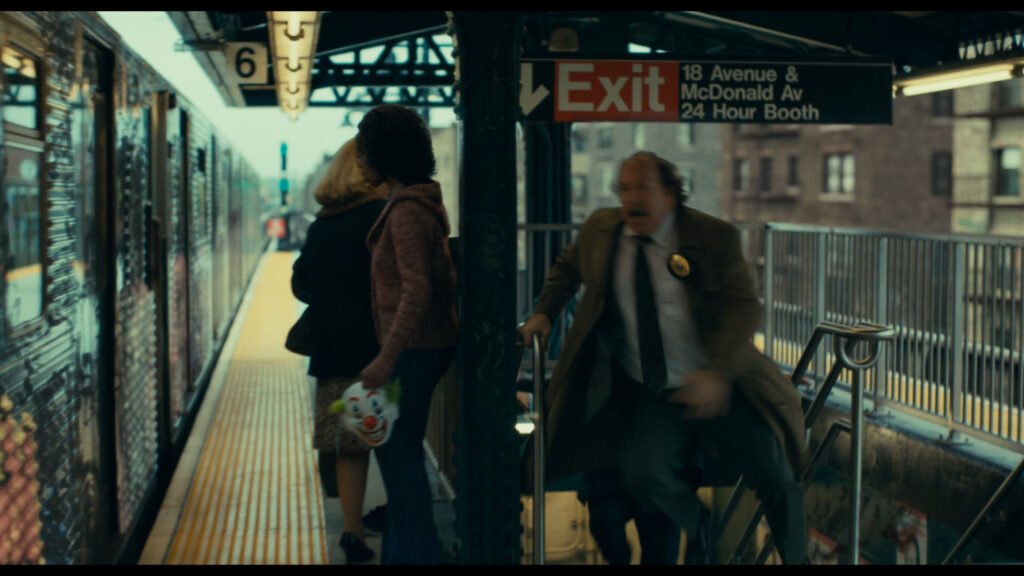
Number 5 is the most iffy one of them all. Theorists believe its when Arthur raises his hand with all five fingers separated waving at the two policemen as he makes his escape while the two policemen are getting beaten.

Number 4 appears prominently in the background as Murray’s studio number 4 when Arthur is preparing to be on set. Arthur’s makeup room number was also 404 in this scene.
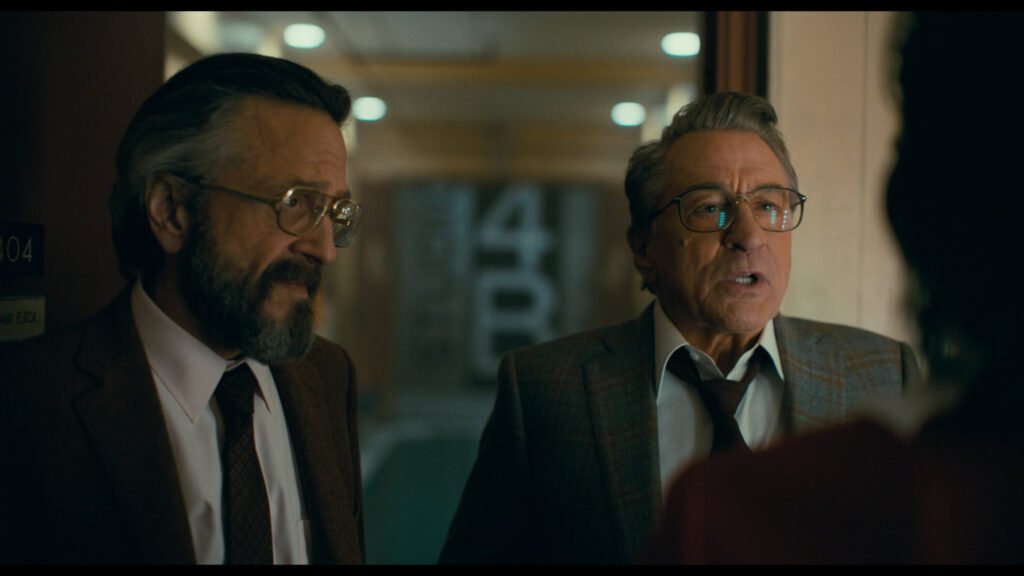
Number 3 appears prominently as camera number 3 just prior to Arthur shooting Murray.

Number 2 appears prominently on the bank of television screens as channel number 2 on the set immediately to the left when slowly zooming out from the center set.

The number 1 is the Ace in the Hole club that appears when Murray is being driven in the back of the police car and prominently when the car crashes.

Which brings the countdown to my suit of cards theory. If number 1 is Ace, it stands to reason that a King, Queen, Jack and ten should be found. Unfortunately, a rewatch of the first act failed to find any of those cards displayed, either literally or figuratively. That is until I paused again toward the beginning of the movie when I was watching on Amazon prime. It was when Arthur was entering his apartment. On the “X-Ray” information section (or whatever it’s called) on the left side of the Amazon Prime player, it listed the song being played as “Here comes the King.”
Indeed, the Budweiser beer song “Here comes the King” was being played lightly in the background somewhere, as his mother was watching television and the later 70s Budweiser commercial must have been playing. It should also be noted that this commercial is playing later on one of the television sets in the bank of TVs displayed after Joker shoots Murray.
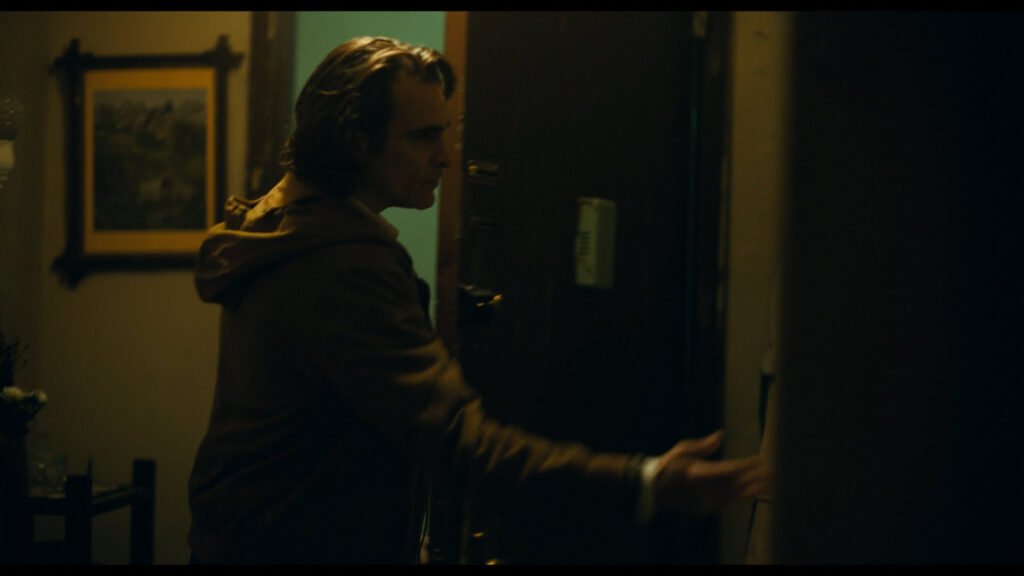
With the King out of the way, the next one to find was the Queen. Very quickly after Arthur enters the apartment, he goes to his mother and Mary, mother of Jesus is displayed prominently above her on the wall. Mary is also known as queen, or queen mother.

With the king and queen now introduced early in the film, it was time to find a jack. There are no characters named Jack in the film and there didn’t appear to be anything on any walls to indicate a jack, nor are there any songs playing. A quick visit to Wikipedia for the playing card jack gives potential ideas:

Are there any Jack-in-the-boxes or Jack-in-the-pulpits? I wouldn’t be able to identify a Jack-in-the-pulpit from my ass, so I searched for a jack-in-the-box in the section of the film between the queen and nine. Lo and behold, there’s not one, but two jack-in-the-boxes displayed in the scene where Arthur drops his gun in the children’s hospital. They are displayed in all of the camera angles with the exception of the angle of the gun on the floor.



Note that they make an “11,” a very common theme throughout the film (more on that in a moment) and also the number of the card if counting up in a suit from 10.
That leaves the number 10. Some people theorized it is the “x” in the Rx pharmacy sign, but that scene appears out of sequence for the countdown. The number 10 does appear in sequence, however, in the train car prior to the number 9 as part of the train car (or train) 9010 when Arthur is riding with the three wall street guys.

So, it does appear to be a suit of cards. One of the other central questions of the film is what does 11:11 mean? That’s the time on the clock in many of the scenes. It’s my opinion that 11:11 represents a split in the personalities creating Joker from Arthur and Batman from Bruce Wayne. This split is often represented visually throughout the film in the framing of the shot with the frame being split into two sections down the center line. Here’s two examples.
Arthur travels by train to Arkham down the center line of the frame:

Later, Arthur is going to meet Thomas Wayne, who he believes is his father. He is physically holding onto the center line of the frame here in the theater, perhaps trying to keep himself from splitting:
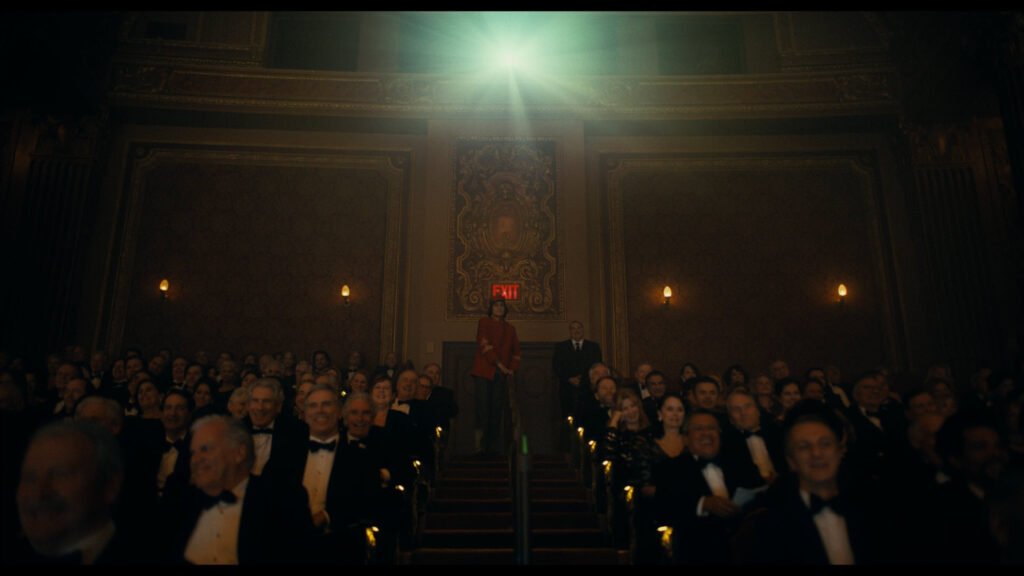
Another item to note is the characters of Arthur and Sophie each pointing a finger gun to their head. This is often viewed as a nod to the movie Taxi Driver where the character Travis does the same. In Taxi Driver, it’s one finger, but in Joker it’s two fingers making an 11.
When Arthur meets Sophie, Sophie uses two fingers as a finger gun, like an 11:
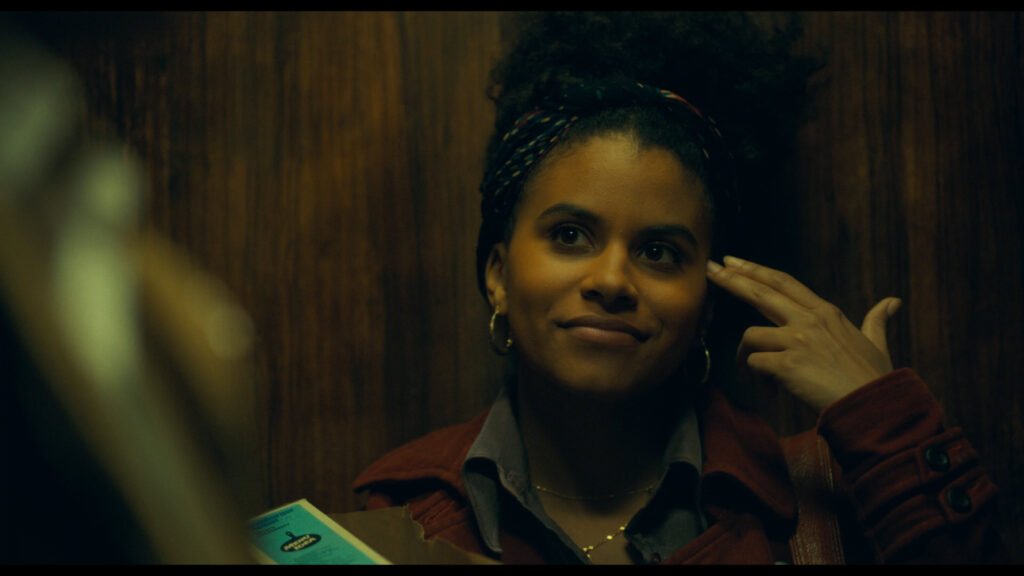
Exiting the elevator, Arthur quickly shoots himself in the head with two fingers:

Later in the movie when Arthur realizes there was no relationship, he uses a two-fingered gun after breaking into Sophie’s apartment. These are the only finger guns I see in the movie:

A question many fans of the movie debate is “When does Arthur become Joker in the movie?” Arthur becomes Joker near the end of the film after Ace in the Hole is displayed and he’s on top of the police car IMHO. He takes the blood from his mouth and creates the Joker smile on the corners of his mouth using two fingers from each hand making an 11:11. And this is after the Ace playing card appears, making Joker a wild out-of-suit card when things had gotten pretty wild in the movie.
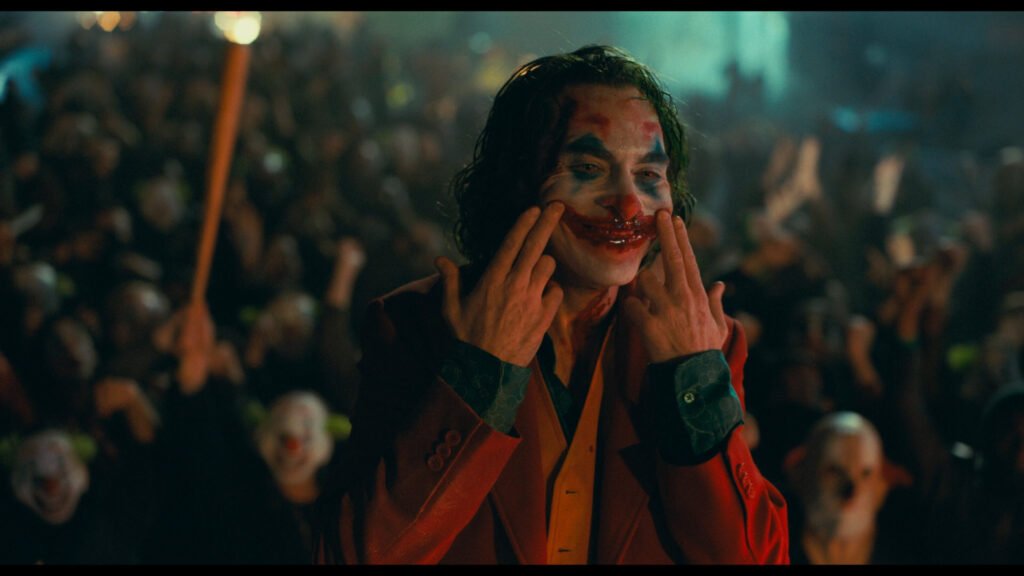
After that, Bruce Wayne is seen standing in the center of the frame with his two dead parents on either side creating an 11, thus symbolizing the moment of Bruce’s split to Batman. The Dark Night Rises from the death of his two parents.

Another question fans of the movie debate is whether or not everything being displayed is in Arthur’s head. I believe it is based on the 11:11. Also, at the end of the movie when Arthur/Joker exits the psychiatrist’s room at Arkham with blood on his feet from presumably killing her, there’s a 13 on the wall. The number 13 representing king means that the film has come full circle.

Update 10/03/2024 – I know little about Joker: Folie à Deux other than it’s at least partly a musical. Based on some items I’ve read online and spoiler-free reviews from people I give more weight to than others, I will be skipping the sequel in the theater if I ever watch it at all.
